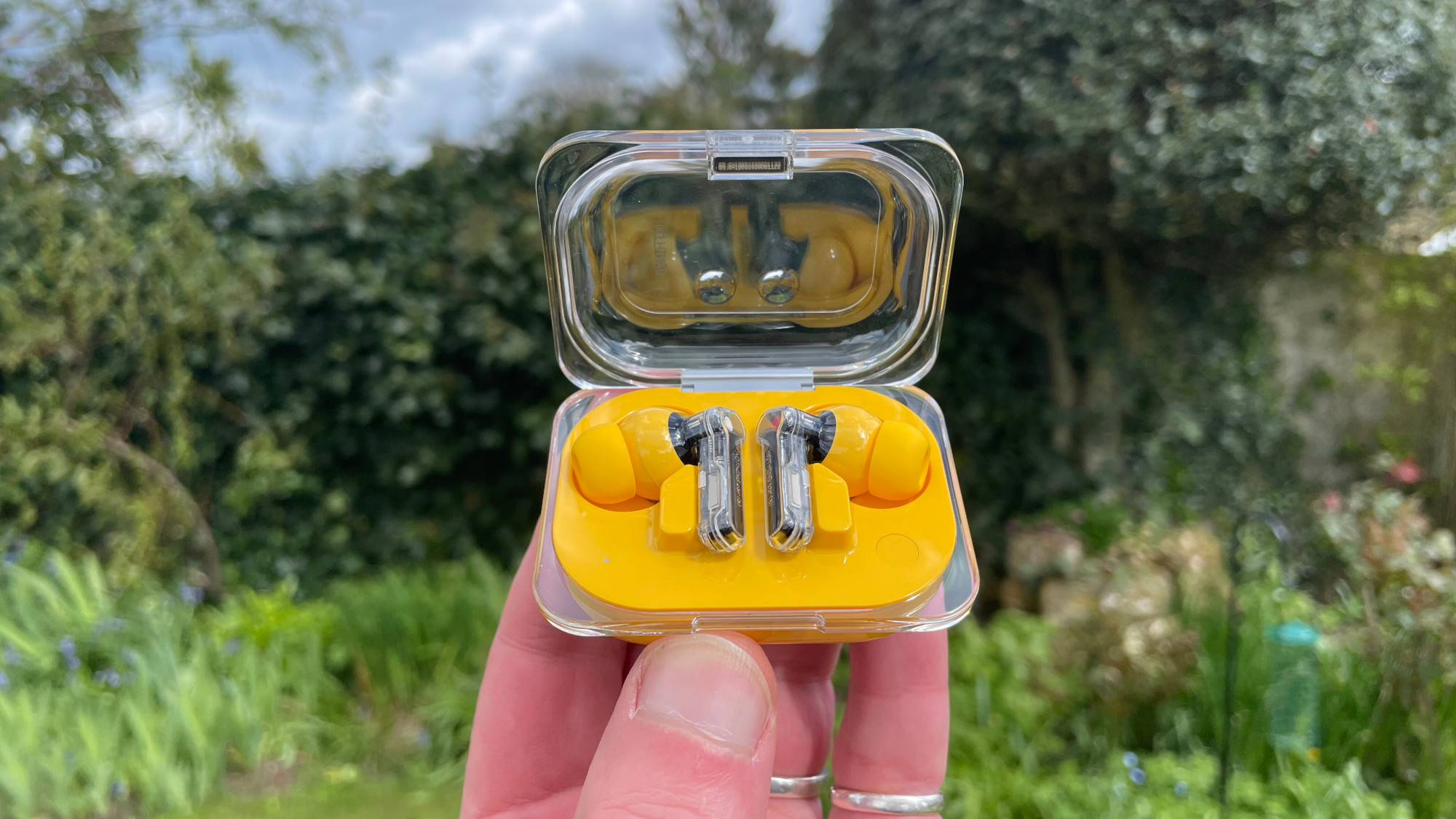
Price: $99
Colors: Black, White, Yellow
Battery life: 5.5 hours; 24.5 hours (charging case)
Size: 1.21 x 0.85 x 0.95 inches (per bud); 1.87 x 2.49 x 0.89 inches (charging case)
Weight: 4.8g (buds); 39.6g (charging case)
Connectivity: Bluetooth 5.2
Durability: IP54 (buds); IPX2 (charging case)
On the heels of debuting two new smartphones in the Nothing Phone 2 and Nothing Phone 2a, aptly-named Nothing is bringing to market a pair of stylishly-designed earbuds to mirror its recent product launch. The Nothing Ear and Nothing Ear (a), which drops the numerical naming convention on its previous designs, takes Nothing’s audio to a new extreme.
Though I may not be a firm believer in its new title, the Nothing Ear (a) does prove to make me a believer in affordable active noise-cancelling (ANC) earbuds — at just $99, they’re solid budget alternatives to the pricier Bose QuietComfort Ultra and AirPods Pro 2.
But beyond an incredible price point, style, and sound audio immersion, the Ear (a) buds bring to the table a veritable slew of controls that allow you so much added personalization. While you don’t get the more advanced Personal Sound Profile (and literal Advanced EQ) available on the $149 Nothing Ear, the Ear (a) still allots a ton of control at your fingertips.
I’ve been playing with these little earbuds over the course of the last week and as someone who’s more accustomed to the best over-hear headphones against such a smaller form factor, the Ear (a) has shown me that buds shouldn’t just be relegated to mere fitness. These can easily be my new daily drivers — and may well be, if not for a few key issues.
Nothing Ear (a) hands-on: Price and availability
You don’t often see ANC earbuds at the $99 mark, especially those that are as well-rounded as the Nothing Ear (a). The first that comes to mind is Samsung’s Galaxy Buds FE, which currently goes for $73 and likewise had a starting price of $99 at launch this past October.
Unlike the Buds FE, though, the Nothing Ear (a) comes equipped with the stellar protection of an IP54 rating for the buds themselves and an IPX2 rating on the case — which should be truly surprising given its transparent chic. And pitting the Nothing Ear (a) even higher is its battery proficiency of 9.5 hours and 5.5 hours with ANC enabled.
You’ll be able to preorder the Nothing Ear (a) today following the launch announcement on nothing.tech, with the buds themselves hitting retail partners and buyers’ doors by April 22.
Nothing Ear (a) hands-on: Design
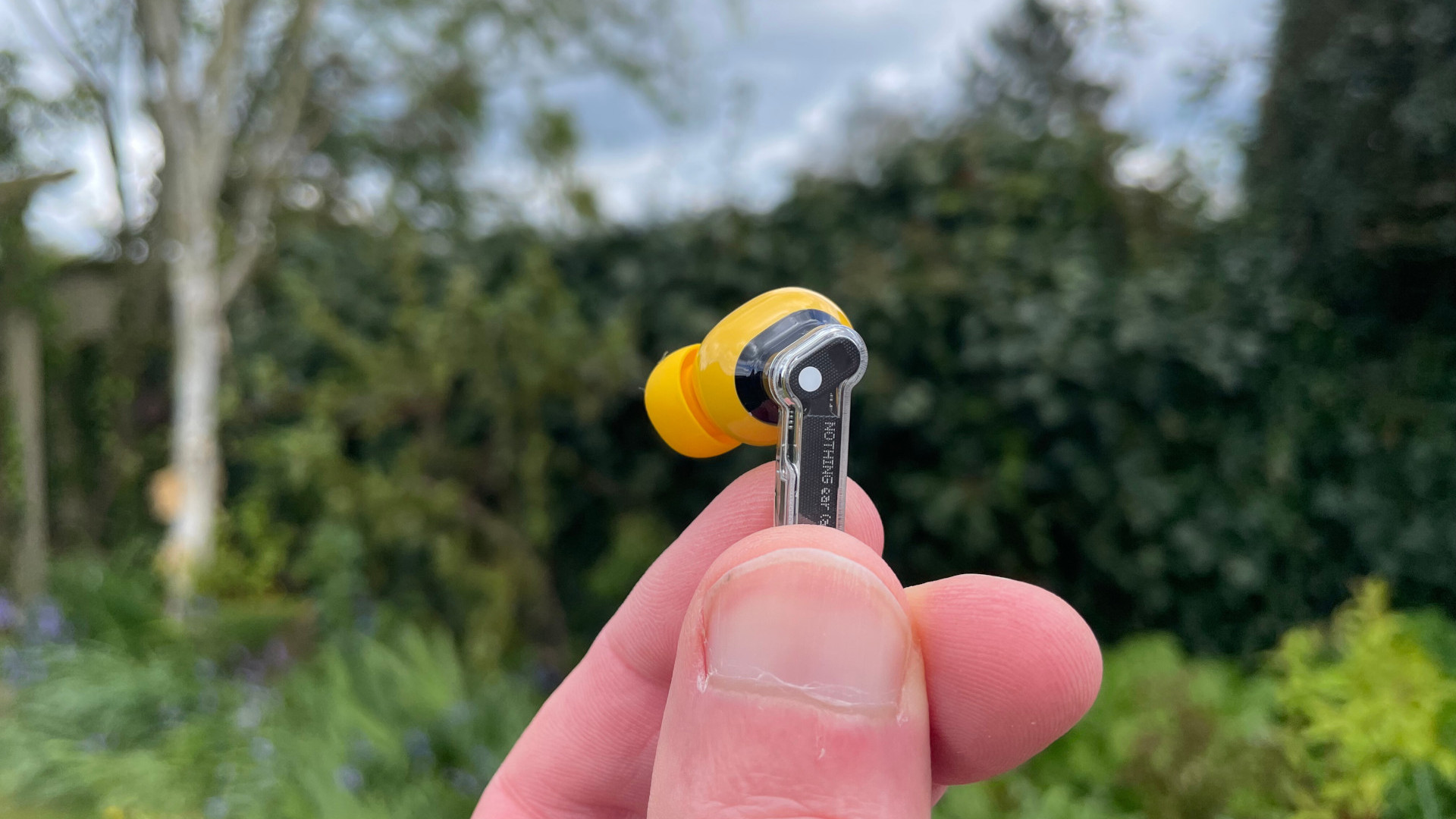
As with most Nothing products, design proves to be their shining feat — and it’s no different with the Nothing Ear (a). The buds come in three different colorways, white, black, and yellow, with the latter blending a bit of black into the mix.
Unlike the Nothing Ear (1) and Nothing Ear (2) with their white buds on black stem design, the Ear (a) goes with a more full color range all throughout. They offer looks that do truly stand out in a market that’s flooded with the all-too simple matte blacks and glossy whites.
While still somewhat simple, the design language on the Ear (a) adds a bit of that Nothing pizazz thanks to its transparent stem. Nothing prides itself on its design, and it’s clear the breadwinner in this race is the new yellow tone. But, with both yellow and white, you do run into the potential of things getting…messy if you don’t clean your ears all too often. So, maybe you should if you end up going with either of the lighter colors on the Ear (a).
Nothing Ear (a) hands-on: Charging case
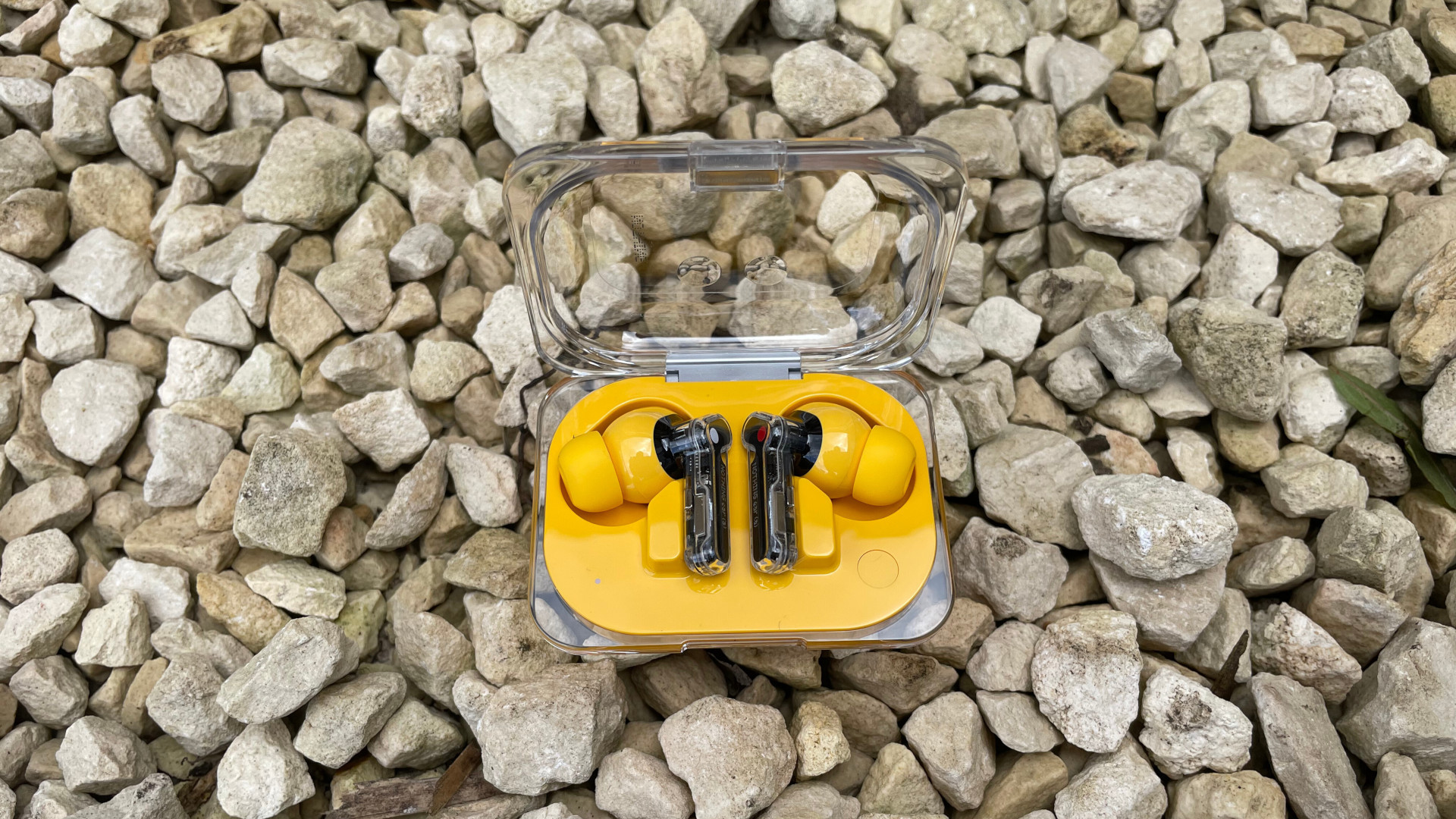
The Nothing Ear (a) buds aren’t anything without a stylish and chic charging case, which in total Nothing fashion goes full transparency mode — if for no other reason than to always appreciate your brand new Nothing earbuds. The case likewise follows in the same colorway of your buds, so they won’t stick out like a sore thumb when cradled and safely charging.
One thing I will note about the Ear (a) charging case is the rather confusing method of putting the buds away. It’s probably more a me thing in not being too accustomed to using buds like these, but it’s taken me a while to get used to the way you cradle them — though a handy black and red dot to signify left and right bud beds is a welcome touch.
As mentioned, the case for the Ear (a) is rated at IPX2 with both water and dust resistance to boot. The case weighs all but a mere 39.6g and fits cozily in any pocket thanks to its conveniently slim design over the bulkier and more rounded cases you see with alternative earbuds. One thing the Ear (a) case does lack, though, is wireless charging, so if that’s more your cup of tea you’d be better suited with the Nothing Ear.
Nothing Ear (a) hands-on: Audio quality
The Ear (a) packs within it three microphones in each bud in tandem with a 11mm custom driver for some serious sound quality. The main highlight is its Smart ANC algorithm, which can hit up to 45 dB and keeps ambient sounds at bay quite well for a mere earbud. The Ear (1) and Ear (2) only supported ANC at 40 dB, for reference.
And sound, too, is superb. Thanks to a suite of incredible features and settings, you can play with the audio quality to an unprecedented level. The Ear (a) offers a Custom EQ for ranges that you can set to your liking across the mid, treble, and bass. But, if that’s just not enough, there’s also a handy bass enhancer, which can be set to a varied five levels of amplification.
I typically kept things light to a mere level three, sometimes bumping up to a four where necessary — mainly for hip-hop, of course. Future's collaboration with Metro Boomin and even Bryson Tiller’s newest self-titled album were head-thumping and full thanks to the Ear (a), with minimal audio leakage. But, I usually shut bass amplification off for my lighter jazz playthroughs or when I needed a bit of Japanese indie rock to feel the Tokyo vibes.
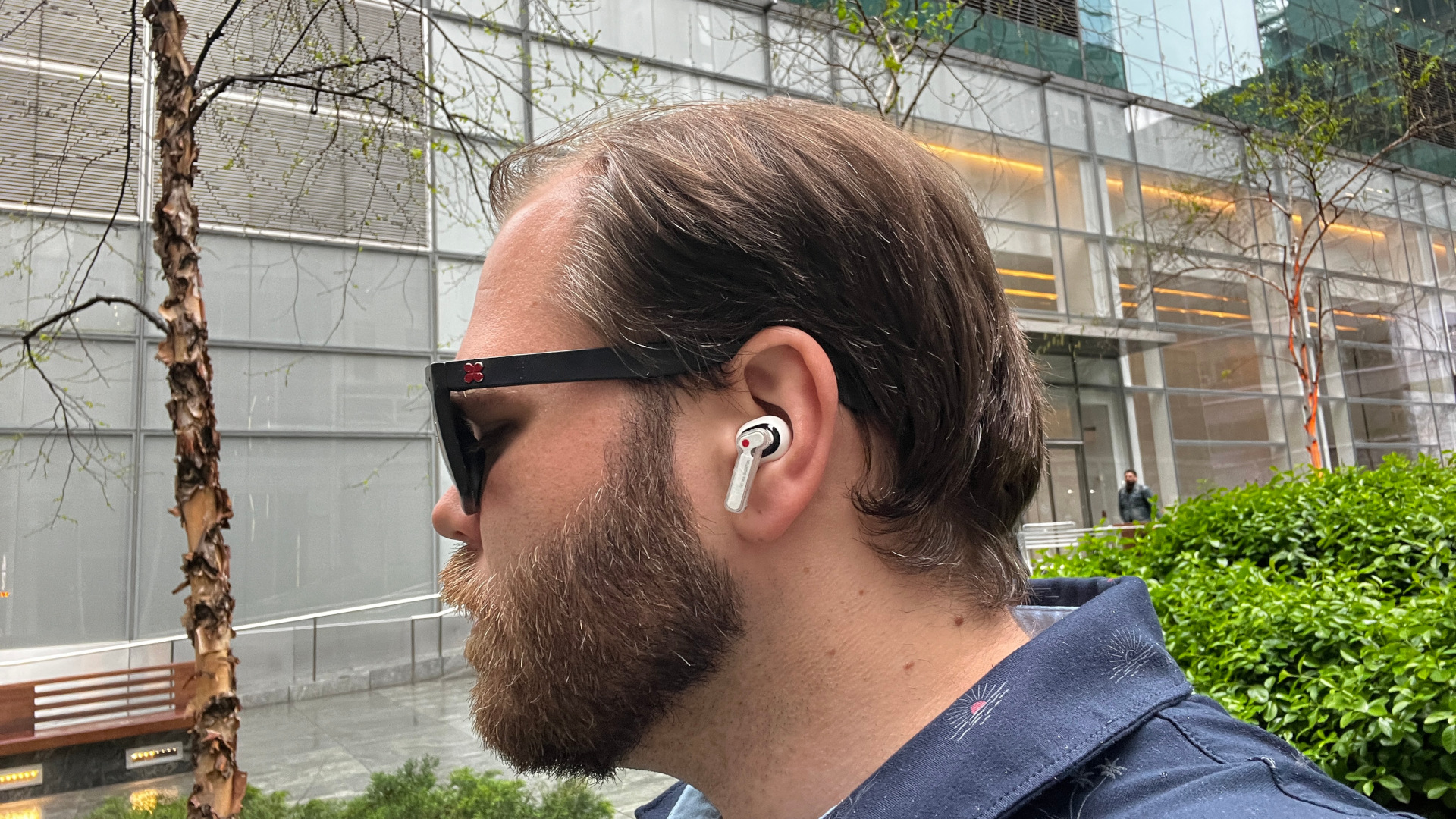
ANC makes all the difference and it’s a real wonder that it works so well on such a small design (and at such an affordable price). ANC can likewise be set to four main levels, those being high, mid, low, and adaptive. I usually just kept it on high, but did quite enjoy the adaptive functionality. There’s also a transparency mode so you can let those necessary ambient sounds in where it matters most.
While my iPhone 13 Pro doesn’t support LDAC, the Ear (a) can leverage the feature set if you’re using any Samsung or LG device that also supports it. Overall, though, I found audio to really stand out on the Ear (a). For something so small and budget-priced, I genuinely did not expect to be blown away by its quality and range of features.
Nothing Ear (a) hands-on: Battery
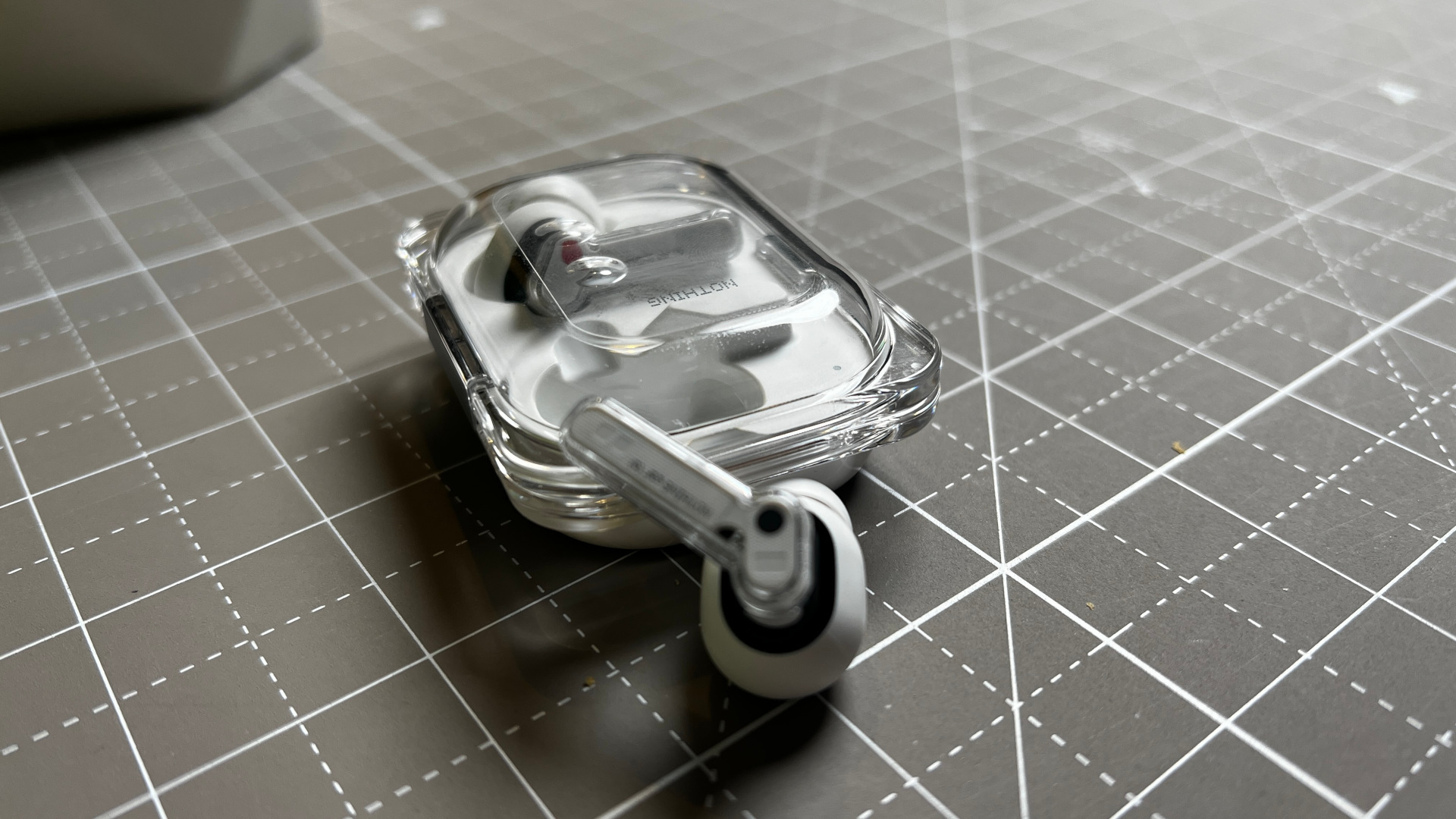
For a $99 pair of earbuds, the Nothing Ear (a) does well in delivering ample battery life. If you’re using ANC, you can expect as much as 5.5 hours, but that number jumps to 9.5 hours without ANC enabled. It’s even more impressive with the case, which allows the Ear (a) 24.5 hours and 42.5 hours without ANC.
Thus, the Ear (a) stands toe to toe with the Bose QuietComfort 2 Earbuds, which support 24 hours with the charging case and 6 hours of base battery life on a MSRP of $299. Of note, the Ear (a) has a better battery than its more expensive rival, the Ear, which can only hit 5.2 hours on ANC and 24 hours with the case. This might be something to consider if battery life is a main concern for you, like it is for me.
Nothing Ear (a) hands-on: Outlook
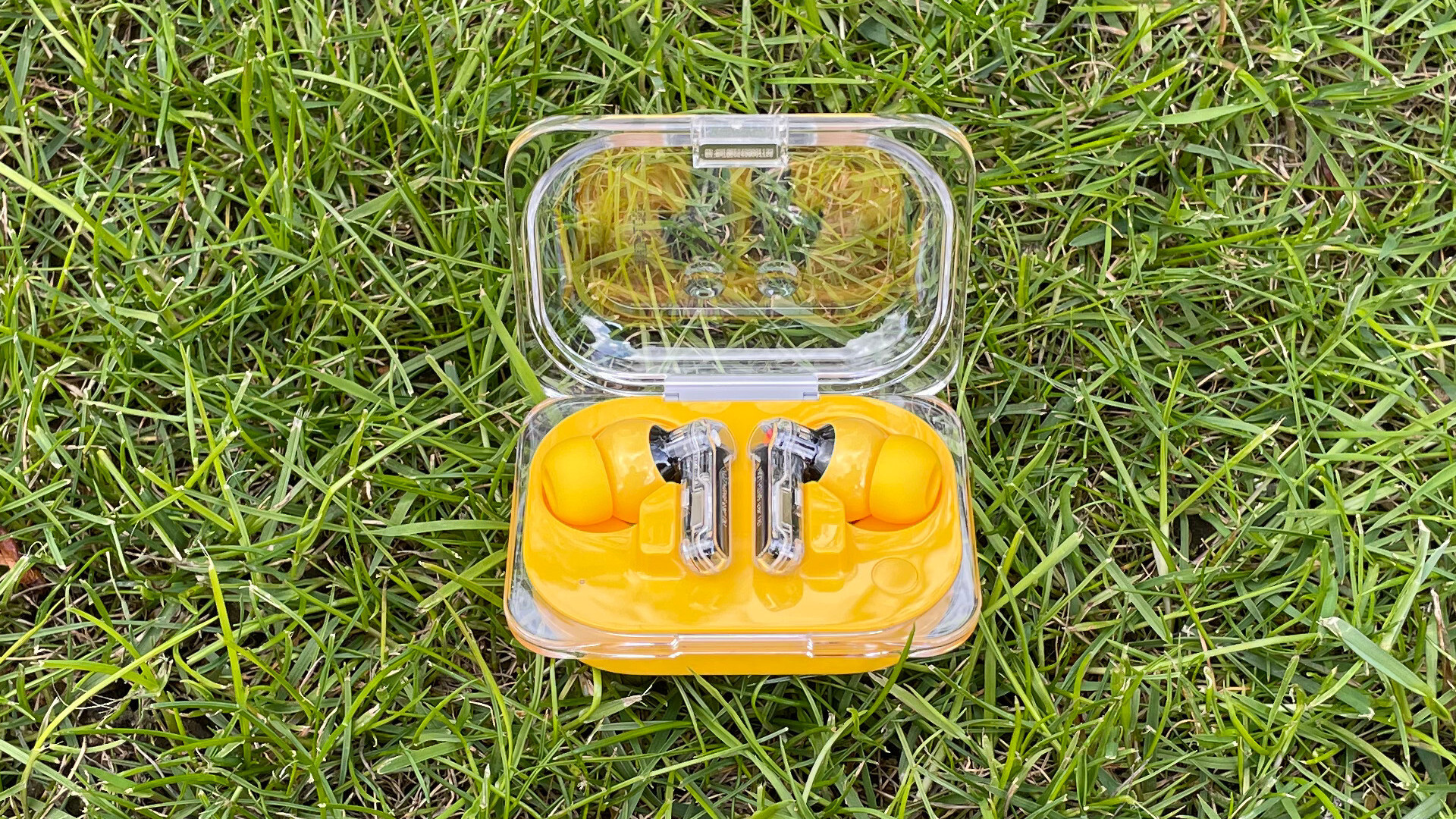
Despite its name, Nothing once more delivers an exceptional audio range that sports excellent sound and features at an unbeatable price. The biggest draw for the Nothing Ear (a) could potentially be its design and chic, but the sound quality is there too. It doesn’t just look nice, it sounds nice and feels incredible in use.
It’s hard to beat what Nothing is offering with its Ear (a) and the suite of advancements it corrals at such a limited price point. As someone who isn’t a fan of in-ear buds like this, which tend to be particularly invasive and not as good as over-ear options, the Ear (a) holds sway in my convictions.
If you’re in the market for a new pair of earbuds, one with a ton of personalization at a price that’s just right, the Ear (a) needn’t be overlooked.







